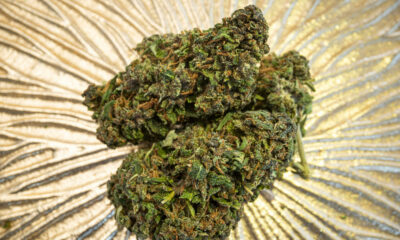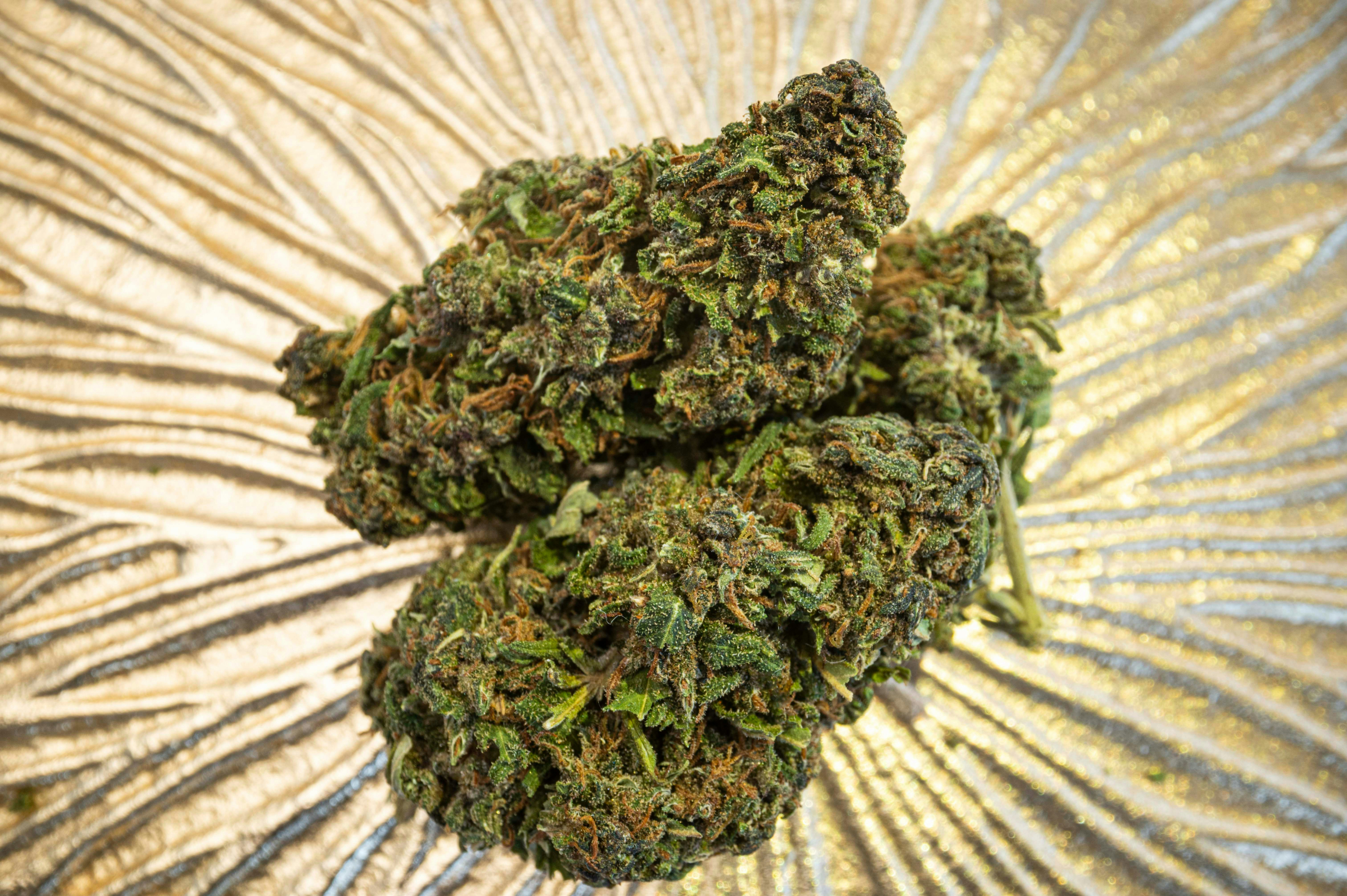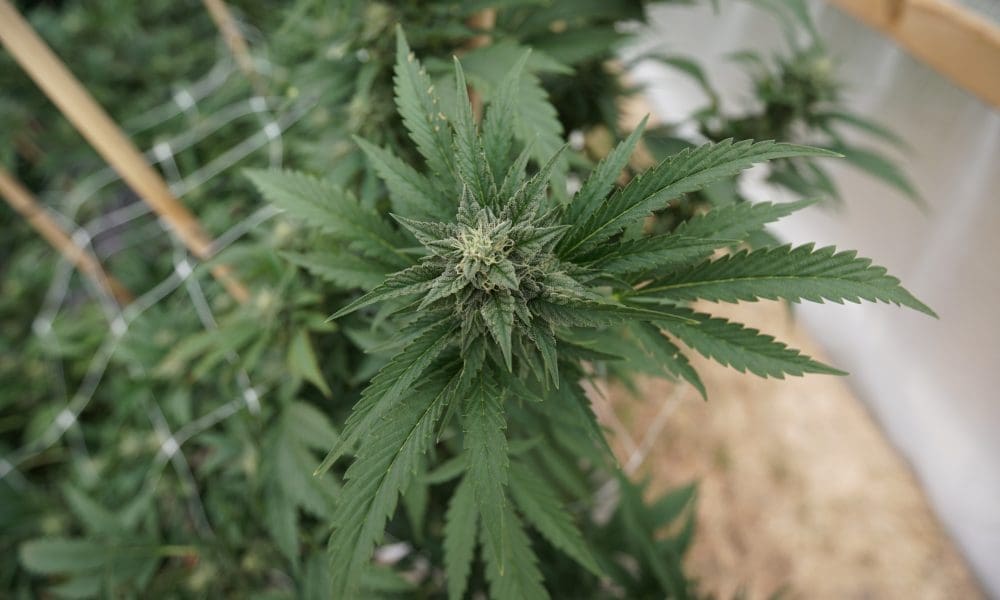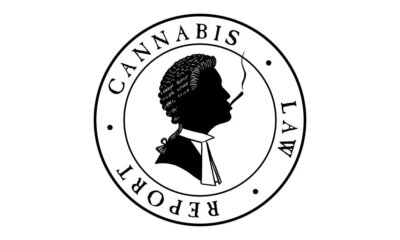featured
THE LAST DAYS OF LEGAL CANNABIS (1990)
Published
20 hours agoon

Original publication: October 1990.
THE LAST DAYS OF LEGAL CANNABIS
Jack Herer
One hundred sixteen million pounds of cannabis sativa were imported into the United States in 1935. As we emerged from the Great Depression, cultivation and commerce of hemp was a thriving industry. Who squashed it? And why?
Excerpted from the updated and revised edition of The Emperor Wears No Clothes, written by Jack Herer. This landmark book, originally published in 1985, contains shocking and sensational material about the uses of the hemp plant, and the real reasons why hemp was made illegal over fifty years ago.

Jack Herer’s landmark book, The Emperor Wears No Clothes, shows how anti-marijuana laws—ostensibly passed in order to suppress the supposedly insolent, criminal behavior of African and Mexican-Americans, and in response to alleged criminal violence and drug-induced insanity by its users—were actually a giant red herring aimed at removing the hemp plant’s resurgence as an agricultural competitor to the emerging petrochemical industry (due to breakthrough decorticating and harvesting technologies) by a few powerful companies. In this excerpt, Herer details the machinations behind the passage of Reefer Madness laws.
A CONSPIRACY TO WIPE OUT THE NATURAL COMPETITION
When mechanical hemp fiber stripping machines and machines to conserve hemp’s high-cellulose pulp became state-of-the-art, available and affordable in the mid-1930s, the enormous timber acreage and businesses of the Hearst Paper Manufacturing Division, Kimberly Clark (USA), St. Regis-and virtually all other timber, paper and large newspaper holding companies—stood to lose billions of dollars and perhaps go bankrupt.
Coincidentally, DuPont had just patented a new sulphuric-acid process for wood pulp paper in 1937 which would, according to their own corporate records and historians, account for over 80% of all its railroad carloadings for the next 50 years.
If hemp had not been made illegal, 80% of DuPont’s business would never have come to be; nor would 80% of the pollution inflicted on our Northwestern and Southeastern rivers have occurred. In an open marketplace, hemp would have saved the majority of America’s vital family farms and would probably have boosted their numbers, despite the Great Depression of the 1930s.
Competing against the environmentally-sane hemp-paper technology would have jeopardized the lucrative financial schemes of Hearst, DuPont and DuPont’s chief financial backer, Andrew Mellon of the Mellon Bank of Pittsburgh. These industrial barons and financiers knew that machinery to cut, bale, decorticate (to separate the fiber from the highcellulose hurd), and process hemp into paper was becoming available in the mid-1930s. Cannabis hemp would have to go.
A series of secret meetings was held. Mellon, in his role as Herbert Hoover’s Secretary of the Treasury, in 1931 appointed his future nephew-in-law, Harry J. Anslinger, to be head of the newly reorganized Federal Bureau of Narcotics and Dangerous Drugs (FBNDD), a post he would hold for the next 31 years.
SOCIAL REORGANIZATION
In DuPont’s 1937 Annual Report to its stockholders, the company strongly urged action (investment) despite the economic chaos of the Great Depression. DuPont was anticipating “radical changes,” predicting that “the revenue raising power of government” would soon be “converted into an instrument for forcing acceptance of sudden new ideas of industrial and social reorganization.”
In The Marijuana Conviction (U. of Virginia Press, 1974), Richard Bonnie and Charles Whitebread II detailed this process:
“By the fall of 1936, Chief Treasury Consul Herman Oliphant had decided to employ the taxing power [of the Federal government], but in a statute modeled after the National Firearms Act and wholly unrelated to the 1914 Harrison [narcotics] Act. Oliphant himself was in charge of preparing the bill. Anslinger directed his army to turn its campaign toward Washington.
The key departure of the marijuana tax scheme from that of the Harrison Act is the notion of the prohibitive tax. Under the Harrison Act, a non-medical user could not legitimately buy or possess narcotics.
To the dissenters in the Supreme Court decisions upholding the act, this clearly demonstrated that Congress’ motive was to prohibit conduct rather than raise revenue. So in the National Firearms Act, designed to prohibit traffic in machine guns, Congress ‘permitted’ anyone to buy a machine gun, but required him to pay a $200 transfer tax and carry out the purchase on an order form.
The Firearms Act, passed in June 1934, was the first act to hide Congress’ motives behind a ‘prohibitive’ tax. The Supreme Court unanimously upheld the anti-machine gun law on March 29, 1937.
Oliphant, who had been sitting on the secret marijuana tax bill for years, had undoubtedly been awaiting the Court’s decision on the prohibition tax on machine guns, now had the Treasury Department suddenly introduce its marijuana bill just two weeks later, on April 14, 1937.”
Thus, DuPont’s decision to invest in new technologies based on “focusing acceptance of sudden new ideas of industrial and social reorganization” makes sense.

THE PROHIBITIVE MARIJUANA TAX
In the secret Treasury Department meetings conducted between 1935 and 1937 prohibitive tax laws were drafted and strategies plotted. “Marijuana” was not banned outright: An “occupational excise tax upon dealers, and a transfer tax upon dealings in marijuana” were called for. Importers, manufacturers, sellers and distributors had to register with the Secretary of the Treasury and pay the occupational tax. Transfers were taxed at $1 an ounce, $100 an ounce if the dealer was unregistered. Also, sales to an unregistered taxpayer were prohibitively taxed. At this time the “raw drug” cannabis sold for one dollar an ounce. The year was 1937. New York State had exactly one narcotics officer. (Now it has a network of thousands of officers, agents and snitches, and twenty times the penal capacity.)
After the Supreme Court decision of March 29, 1937, upholding the prohibition of machine guns through taxation, Herman Oliphant made his move. On April 14, 1937, he introduced the bill directly to the House Ways and Means Committee instead of to other appropriate committees such as Food and Drug, Agriculture, Textiles, Commerce, etc. The reason may have been that Ways and Means is the only committee to send its bills directly to the House floor without the act having to be debated upon by other committees. Ways and Means Chairman Robert L. Doughton quickly rubberstamped the secret Treasury bill and sent it sailing through Congress to the President.
“DID ANYONE CONSULT WITH THE AMA?”
However, even within his controlled committee hearings, many expert witnesses spoke out against the passage of these unusual tax laws. Dr. James Woodward, for instance, who was both a physician and an attorney, testified on behalf of the American Medical Association (AMA). He said, in effect, the whole fabric of federal testimony was tabloid sensationalism! No real testimony was being used in its passage! This law could possibly in ignorance deny the world a potential medicine, especially now that the medical world was just beginning to find which ingredients in marijuana were active. He stated to the committee that the whole reason the AMA hadn’t come out against the marijuana tax law sooner was that it had been described in the press for 20 years as “killer weed from Mexico.”
The AMA doctors had just realized, “two days before” the spring 1937 hearings, that the plant Congress intended to outlaw was known medically as cannabis—the benign substance used for 100 years in America with perfect safety. Woodward also stated the main reason he did not know this fact was that all the meetings had been held in secret by the Treasury Department over the past two years.
He and the AMA were quickly denounced by Anslinger and the entire Congressional committee, and curtly excused. (The AMA and Roosevelt administration were strong antagonists in 1937.) When the Marijuana Tax Act bill came up for oral report, discussion, and vote on the floor of Congress, only one pertinent question was asked from the floor: “Did anyone consult with the AMA and get their opinion?”
Representative Vinson, answering for the Ways and Means Committee replied, “Yes, we have, a Dr. Wharton [mistaken pronunciation of Woodward?] and the AMA are in complete agreement!”
With this memorable lie, the bill passed, and became law in September, 1937. A federal police force was created, able to demand millions of wasted years in jail and even the deaths of individual Americans, in order to save polluting industries, and to reinforce policies of racial hatred.
Testimony before Congress in 1937, for the purpose of outlawing marijuana, consisted almost entirely of Hearst’s and other sensational and racist newspaper articles read aloud by Harry J. Anslinger, director of the Federal Bureau of Narcotics (FBN). (This agency has since evolved into the Drug Enforcement Administration [DEA].) Harry J. Anslinger was director of the new Federal Bureau of Narcotics from its inception in 1931 for the next 31 years, and was only forced into retirement in 1962 by President John F. Kennedy, after Anslinger tried to censor the publication and publishers of Professor Alfred Lindsmith’s “The Addict and the Law,” (Washington Post, 1961) and to blackmail and harass his employer, Indiana University.
Anslinger had come under attack for racist remarks as early as 1934 by a US senator from Pennsylvania, Joseph Guffey, for such things as referring to “ginger-colored n*****s” in letters circulated to his department heads on FBN stationery.
OTHERS SPOKE OUT, TOO
Also lobbying against the Marijuana Tax Act’s passage with all its energy was the National Oil Seed Institute, representing the high quality machine lubrication producers as well as paint manufacturers. Speaking to the House Ways and Means Committee in 1937, their general counsel, Ralph Loziers, testified eloquently about the hemp seed oil that was to be, in effect, outlawed: “Respectable authorities tell us that in the Orient, at least 200 million people use this drug; and when we take into consideration that for hundreds, yes, thousands of years, practically that number have been using this drug. It is significant that in Asia and elsewhere in the Orient, where poverty stalks abroad on every hand and where they draw on all the plant resources which a bountiful nature has given that domain—it is a significant fact that none of those 200 million people has ever, since the dawn of civilization, been found using the seed of this plant or using the oil as a drug.
“Now, if there were any deleterious properties or principles in the seed or oil, it is reasonable to suppose that these Orientals, who have been reaching out in their poverty for something that would satisfy their morbid appetite, would have discovered it….”
“If the committee please, the hemp seed, or the seed of the cannabis sativa is used in all the Oriental nations and also in part of Russia as food. It is grown in their fields and used as an oatmeal. Millions of people every day are using hemp seed in the Orient as food. They have been doing that for many generations, especially in periods of famine….”
“The point I make is this—that this bill is too all inclusive. This bill is a world encircling measure. This bill brings the activities—the crushing of this great industry under the supervision of a bureau—which may mean its suppression. Last year, there was imported into the US 62,813,000 pounds of hemp seed. In 1935 there was imported 116 million pounds….”
PROTECTING SPECIAL INTERESTS
Prior to 1931, Anslinger was Assistant US Commissioner for Prohibition. (Anslinger, remember, was hand-picked to head the new Federal Bureau of Narcotics by his uncle-in-law, Andrew Mellon, Secretary of the Treasury under President Herbert Hoover.) The same Andrew Mellon was also the owner and largest stockholder of the sixth largest bank (in 1937) in the United States, the Mellon Bank in Pittsburgh, one of only two bankers for DuPont from 1928 to the present. (DuPont, in its entire 170-year history, has borrowed money from banks only twice, once to buy control of General Motors in the 1920s. DuPont’s banking business is the prestigious plum of the financial world.)

DuPont was anticipating ” radical changes” from “the revenue raising power of sudden new ideas of industrial and social reorganization.”
In 1937, Anslinger testified before Congress, saying, “Marijuana is the most violence causing drug in the history of mankind.” This along with Anslinger’s outrageous marijuana statements and beliefs was made to the Southern-dominated Congressional committee and is now an embarrassment to read in its entirety. For instance, Anslinger kept a “Gore File,” culled almost entirely from Hearst and other sensational tabloids—e.g., stories of axe murders, where one of the participants reportedly smoked a joint four days before committing the crime. Anslinger pushed on Congress as a fact that about 50% of all violent crimes committed in the US were committed by Spaniards, Mexican-Americans, Latin Americans, Filipinos, Negroes, and Greeks and that these crimes could be traced directly to marijuana. Not one of Anslinger’s marijuana “Gore Files” of the 1930s is believed true by scholars who have painstakingly checked the facts. In fact, FBI statistics, had Anslinger bothered to check, showed at least 65% to 75% of all murders in the US were then—and still are-alcohol related.
As an example of his racist statement, Anslinger read into US Congressional testimony (without objection) stories about “coloreds” with big lips luring white women with jazz and marijuana. He read of two Negro students at the University of Minnesota doing this to a white co-ed “with the result of pregnancy.” The Congressmen of 1937 gasped at this and at the fact that this drug seemingly caused white women to touch or even look at a “Negro.”
SELF-PERPETUATING LIES
Virtually no one in America, other than a handful of rich industrialists and their hired cops, knew that their chief potential competitor, hemp, was being outlawed under the name marijuana.
That’s right. Marijuana was most likely just the excuse for hemp prohibition and economic suppression. The water was further muddied by the confusion of marijuana with locoweed (jimsonweed). The situation was not clarified by the press, which continued to print the disinformation into the 1960s. And even at the dawn of the 1990s, the most extravagant and ridiculous attacks on the hemp plant draw national media attention.
But serious discussions of the health, civil liberties and economic aspects of the hemp issue are frequently dismissed as being nothing but an “excuse so that people can smoke pot.”
One must concede that, as a tactic, confusing the public about the nature of hemp and its relationship with “marijuana” has been very successful.

Author: mscannabiz.com
MScannaBIZ for all you Mississippi Cannabis News and Information.
You may like
-


Cannabis farm worker in California dies following a chaotic federal immigration raid
-


Looks Don’t Get You High. Smokeability Does.
-


Missouri Marijuana Regulators Revoke License Of Concentrate Manufacturer Involved In Massive Product Recall
-


Suspects rob Paseo District marijuana dispensary
-


Malta Limits Historic Marijuana Legalization Law, Sending Threat Letters To Consumers Over ‘Nuisance’ Odors
-


Gang uses drone to find and steal cannabis farms

In today’s cannabis scene, “premium” and “high-grade” get thrown around so casually that they’ve lost all meaning. Anything with a little frost and a decent nose is getting labeled top-shelf, no matter how it actually smokes.
That’s the problem.
When every bag is called fire, even when it burns like mids, the entire culture suffers. Consumers get duped into paying premium prices for a mediocre product. New growers lose motivation to push the limits. Standards get stuck. The real heat gets buried under hype.
Somewhere along the way, the cannabis market started prioritizing how weed looks on Instagram over how it smokes. Bag appeal, frosty pics, loud branding — all of it’s been elevated to a point where looks have overtaken experience. But looks don’t have anything to do with smokeability. Photos don’t tell you how clean the smoke is.
Here’s the reality: True quality is how it smokes. How it hits the lungs, how it burns, how it lingers. That’s the only metric that matters.
Right now? There are crews out there putting out “clean mids” that smoke better than half the overpriced, so-called premium in Mylar bags.
If this culture wants to evolve, the standard can’t be set by the lens. It’s got to be set by the lungs. Every time.
— Submitted by Walter Bridger, Mount Maunganui, NZ.
About High Thoughts: Short Hits From the Community
Welcome to High Thoughts, a new series from High Times featuring quick takes, stray thoughts, and stoned wisdom from our global cannabis community. These aren’t polished essays or sponsored posts — just real voices from real people who live this culture every day.
In this edition, Walter Bridger, a third-generation cannabis advocate from New Zealand and founder of Trap Talk, reminds us why smokeability still matters more than bag appeal. Looks don’t get you high. Lungs do.
This article is from an external, unpaid contributor. It does not represent High Times’ reporting and has not been edited for content or accuracy.
Photo by Chiara David on Unsplash

Author: mscannabiz.com
MScannaBIZ for all you Mississippi Cannabis News and Information.
featured
Missouri Marijuana Regulators Revoke License Of Concentrate Manufacturer Involved In Massive Product Recall
Published
15 hours agoon
July 20, 2025
“The department enforces its regulations to uphold the Missouri Constitution and ensure safe access to marijuana product at our licensed facilities.”
By Rebecca Rivas, Missouri Independent
A Springfield marijuana manufacturer central to Missouri’s largest cannabis product recall last year had its license revoked Thursday.
State regulators found the company, C&C Manufacturing LLC, created a distillate—or THC concentrate that produces a high in edibles and vape pens—using unregulated THC.
Other manufacturers statewide bought the distillate and used it to make numerous brands of vapes, edibles or pre-rolled joints, including Rove, Zen and Packarillos. A total of 135,000 products were recalled last year.
After the state issued the company a notice of pending revocation in January, regulators discovered C&C had “removed or destroyed all of the marijuana product in its facility as well as its video records,” according to the Missouri Division of Cannabis Regulation’s Thursday press release announcing the revocation.
“C&C’s use of unregulated THC to create marijuana products, numerous violations of rule, and destruction of product and records in direct violation of DCR orders demonstrates clear disregard for law at the expense of health and safety and has no place in Missouri’s regulated market,” said Amy Moore, the division’s director.
Matt Cummins, CEO of GOAT Extracts, is listed as the designated contact for the facility and a number of GOAT products are on the list. The Independent reached out to the designated contact number listed on the state’s facility database for comment and did not receive a response.
Some of the unregulated THC involved using “chemical modification,” the release states. That could mean C&C bought a THC concentrate that had been made by converting hemp-derived CBD into THC using a chemical conversion process. Then the company used that to make its distillate, a process that had been used in another major recall case involving the company Delta Extraction.
The recall time frame is quite wide. It goes back to last year when companies were trying to ramp up for recreational marijuana sales.
Nick Rinella, CEO of Hippos Cannabis, told The Independent last year that his company unknowingly bought some of C&C’s distillate in 2023 when Hippos’ own supply was low at its grow and manufacturing facilities.
But he emphasized that this recall is not because of lack of testing. Once Rinella and other manufacturers got the distillate and made products with it, those were “properly tested” before they went on the shelves, he said.
“We can feel confident that those products were safe,” he said last August. “They passed all the tests, and we have some of the most stringent tests in the country.”
During the recall announcement last year, the division said no adverse reactions involving recalled products have been reported.
The division’s Thursday release states that the violations leading to C&C’s license revocation are “numerous.”
It states the company violated state and federal law by transporting Missouri marijuana outside of the state. C&C also sold marijuana products in Missouri that did not originate from Missouri marijuana and “failed to preserve records and marijuana products as directed by DCR’s prior directives.”
“The department enforces its regulations to uphold the Missouri Constitution,” Moore said, “and ensure safe access to marijuana product at our licensed facilities.”

Author: mscannabiz.com
MScannaBIZ for all you Mississippi Cannabis News and Information.
featured
Malta Limits Historic Marijuana Legalization Law, Sending Threat Letters To Consumers Over ‘Nuisance’ Odors
Published
19 hours agoon
July 20, 2025
“We’re back to punishing plants and people instead of fixing the real problems, which are housing density, social stigma and lack of safe venues.”
By Felipe Neis Araujo, Filter
In late 2021, Malta became the first European country to legalize marijuana possession for adult use. Anyone over 18 could keep up to seven grams on their person and up to 50 grams at home, plus grow up to four plants. The act also established a regulatory framework that included cultivation and distribution by licensed nonprofits known as Cannabis Harm Reduction Associations (CHRAs).
Portugal and other countries had decriminalized personal possession, but it was still a civil violation. Malta’s reform was praised as a pragmatic, public health‑oriented pivot that would siphon revenue away from drug-trafficking groups and spare people the burden of a criminal-legal record. Public consumption remained banned, but people could smoke cannabis at home.
Four years later, the island nation’s governing Labour Party has changed its tune.
In May, the Parliament of Malta unanimously approved Bill 128, which sets a €235 fine for public consumption of non-medical cannabis—including “in any place where the [odor] causes a nuisance to third parties.”
Previously this had only applied to public consumption, but it now includes people smoking in the privacy of their home—if a neighbor complains about the smell. A free hotline has been set up to receive complaints. In July, warning letters began to arrive.
“A lot of people were smoking on their balconies and annoying people who lived above them,” Joey Reno Vella, the executive chairperson of the Authority for the Responsible Use of Cannabis (ARUC), told the Times of Malta earlier in 2025.
The law states that no “criminal proceedings…shall be taken except at the request or with the authorization of the Authority on the Responsible Use of Cannabis.” But it becomes a court matter if the fine goes unpaid—and then what? As time goes on, how will ARUC handle people who are fined repeatedly and cannot pay?
“We’re back to punishing plants and people instead of fixing the real problems, which are housing density, social stigma and lack of safe venues,” Maltese activist and former ARUC employee Karen Mamo told Filter at an academic drug policy conference in June. CHRA have been forbidden from operating on‑site lounges.
The policy U‑turn did not come out of nowhere. Policing remained part of legalization from Day One, targeting young people who smoked outside. Police officers pounced on those using cannabis on beaches or rooftops. Conservative lobbyists and the Catholic Church spread a narrative about Malta becoming the new Amsterdam.
In 2023, House of Representatives Deputy Speaker Claudette Pace told members of Parliament that she’d met a visually impaired man whose guide dog had gotten high from second-hand smoke. In 2024, the government launched a high-profile Responsible Cannabis Use campaign. Warnings about the fine for smoking in public or near minors appeared on billboards and Instagram posts.
The message was clear: Cannabis is still a threat to children and public order. These tired tropes ignore the fact that adults can drink alcohol and smoke cigarettes while holding a a child in their lap, and apparently not pose the same risk.
In the island’s densely populated apartment blocks, the issue of odor complaints emerged as a way to effectively roll back the 2021 protections.
In 2011, Malta saw an historic cannabis criminalization protest led by David Caruana, who was facing charges for growing cannabis plants on his balcony; cultivation was considered to be drug trafficking, even in personal-use quantities. Advocates highlighted the case of Daniel Holmes and Barry Lee, who in 2006 had been arrested for growing five plants. Lee died by suicide while awaiting trial; Holmes was serving a 10.5-year sentence. He was released in 2018.
NGOs such as ReLeaf Malta rallied public support and pushed politicians to imagine something better. This lobbying gained traction after 2015’s Drug Dependence Act nominally decriminalized personal possession, but left police free to detain users for 48 hours. Advocates fighting against piecemeal reform finally prevailed in 2021.
The new amendments will fall hardest on tenants who cannot control communal airflow and on working‑class youth who smoke cannabis outside because landlords ban indoor use. Cultivating the four permitted plants anywhere other than at home now comes with a fine of up to €1,000, yet the plants cannot be visible outdoors. Such fines may not deter affluent growers with detached homes and gardens, but may bankrupt someone renting a third‑floor walk‑up in Birkirkara.
The new law could easily clog the courts, with every contested fine becoming a quasi‑forensic dispute over whose nostrils caught what and when. And, perhaps most galling, the new law imposes mandatory data-sharing on CHRAs—they must hand over their membership lists to ARUC, sowing fear over how that information will be used.
Malta once offered reformers across Europe a glimpse of what nationwide legalization might look like outside the Americas. Yet Malta’s rapid reversal shows how fragile reform can be and that legalization is a process, not a finish line.
This article was originally published by Filter, an online magazine covering drug use, drug policy and human rights through a harm reduction lens. Follow Filter on Bluesky, X or Facebook, and sign up for its newsletter.
Photo courtesy of Chris Wallis // Side Pocket Images.

Author: mscannabiz.com
MScannaBIZ for all you Mississippi Cannabis News and Information.

Cannabis farm worker in California dies following a chaotic federal immigration raid

Looks Don’t Get You High. Smokeability Does.

Missouri Marijuana Regulators Revoke License Of Concentrate Manufacturer Involved In Massive Product Recall

Suspects rob Paseo District marijuana dispensary

Malta Limits Historic Marijuana Legalization Law, Sending Threat Letters To Consumers Over ‘Nuisance’ Odors

Gang uses drone to find and steal cannabis farms

THE LAST DAYS OF LEGAL CANNABIS (1990)

Regulating Intoxicating Hemp Products Is A ‘Priority,’ Illinois Lawmaker Says

A Totally Incomplete List Of The Top Cannabis Accounts And Creators To Follow On Social Media
Words Of Gratitude From The Heart Of Bennett Production

Wisconsin’s Biggest City Adopts Rules Limiting Sales Of THC-Infused Hemp Products To Adults 21 And Older

Mom, Apple Pie & Cocaine (1979)

Military Veteran Sues Feds, Claiming He Was Wrongly Detained After Immigration Raid At California Marijuana Farm

Kids caught smoking weed, vapes in videos; Augusta woman sought for questioning

Silk Road Operator Pardoned By Trump Makes Case For Legalizing All Drugs To Mitigate Harms Of Prohibition—Even If It’s ‘Not Necessarily What You Want To Hear’

Czech Republic President Signs Bill To Legalize Marijuana Home Cultivation And Allow Psilocybin For Medical Use

Senate Sets Initial Vote On Trump’s Pick To Lead DEA Next Week As Marijuana Rescheduling Sits In Limbo
High Times Greats: Hunter S. Thompson

Minnesota City Launches Government-Branded Cannabis Gummy—And It Wants Residents To Pick The Product’s Name

Over 100 pounds of cannabis seized during Oakland traffic stop

Gen Z Increasing Alcohol Intake Without Cutting Cannabis

Illegal marijuana grow worth $3M busted in Hacienda Heights, deputies say

Beat the heat with a Bong Island Iced Tea

‘Not Waiting on Broken Systems to Deliver’

Alert: Department of Cannabis Control updates data dashboards with full data for 2023

Connecticut Appoints The US’s First Cannabis Ombudsperson – Yes there is a pun in there and I’m Sure Erin Kirk Is Going To Hear It More Than Once!

5 best CBD creams of 2024 by Leafly

EU initiative begins bid to open access to psychedelic therapies

Free delta-9 gummies from Bay Smokes
New Study Analyzes the Effects of THCV, CBD on Weight Loss

Mississippi city official pleads guilty to selling fake CBD products

May 2024 Leafly HighLight: Pink Runtz strain

5 best autoflower seed banks of 2024 by Leafly

Curaleaf Start Process Of Getting Their Claws Into The UK’s National Health System – With Former MP (Resigned Today 30/5/24) As The Front Man

Discover New York’s dankest cannabis brands [September 2024]

Local medical cannabis dispensary reacts to MSDH pulling Rapid Analytics License – WLBT

Horn Lake denies cannabis dispensary request to allow sale of drug paraphernalia and Sunday sales | News

Press Release: CANNRA Calls for Farm Bill to Clarify Existing State Authority to Regulate Hemp Products

Nevada CCB to Accept Applications for Cannabis Establishments in White Pine County – “Only one cultivation and one production license will be awarded in White Pine County”

5 best THC drinks of 2024 by Leafly

6 best CBD gummies of 2024 by Leafly

The Daily Hit: October 2, 2024

5 best delta-9 THC gummies of 2024 by Leafly

Weekly Update: Monday, May 13, 2024 including, New Guide for Renewals & May Board meeting application deadline

People In This State Googled ‘Medical Marijuana’ The Most, Study Shows

Thailand: Pro-cannabis advocates rally ahead of the government’s plan to recriminalize the plant

PRESS RELEASE : Justice Department Submits Proposed Regulation to Reschedule Marijuana

Press Release: May 9, STIIIZY and Healing Urban Barrios hosted an Expungement Clinic & Second Chance Resource Fair
Trending
-

 California Cannabis Updates1 year ago
California Cannabis Updates1 year agoAlert: Department of Cannabis Control updates data dashboards with full data for 2023
-

 Breaking News1 year ago
Breaking News1 year agoConnecticut Appoints The US’s First Cannabis Ombudsperson – Yes there is a pun in there and I’m Sure Erin Kirk Is Going To Hear It More Than Once!
-

 best list12 months ago
best list12 months ago5 best CBD creams of 2024 by Leafly
-

 Business10 months ago
Business10 months agoEU initiative begins bid to open access to psychedelic therapies
-

 Bay Smokes1 year ago
Bay Smokes1 year agoFree delta-9 gummies from Bay Smokes
-

 cbd1 year ago
cbd1 year agoNew Study Analyzes the Effects of THCV, CBD on Weight Loss
-

 Mississippi Cannabis News1 year ago
Mississippi Cannabis News1 year agoMississippi city official pleads guilty to selling fake CBD products
-

 California1 year ago
California1 year agoMay 2024 Leafly HighLight: Pink Runtz strain

